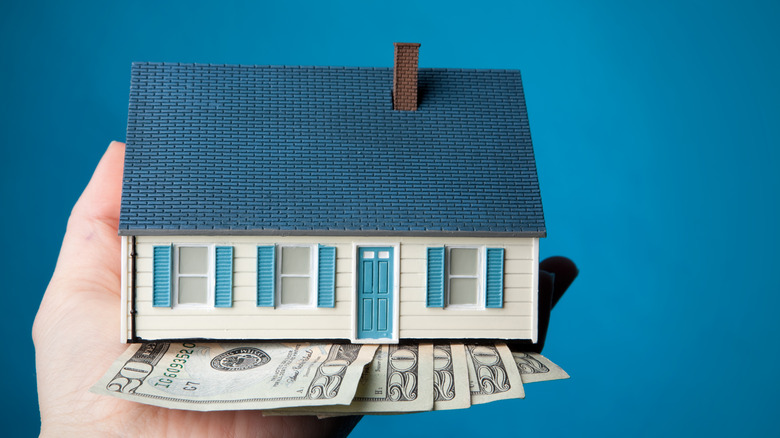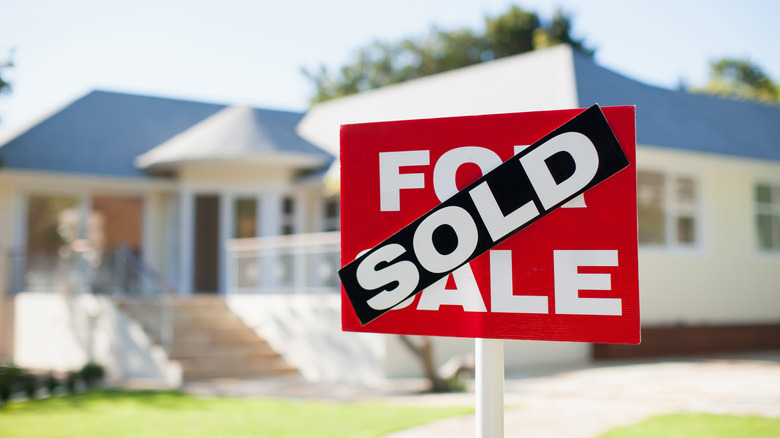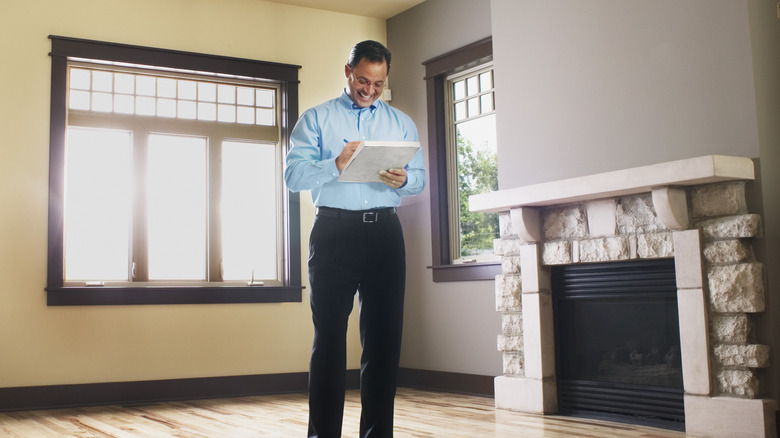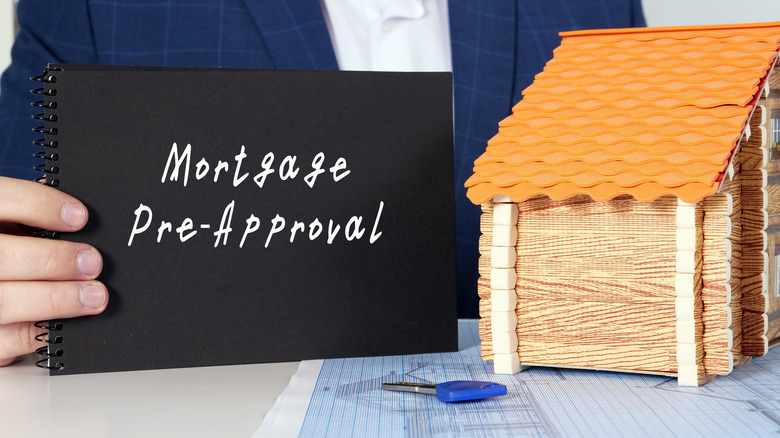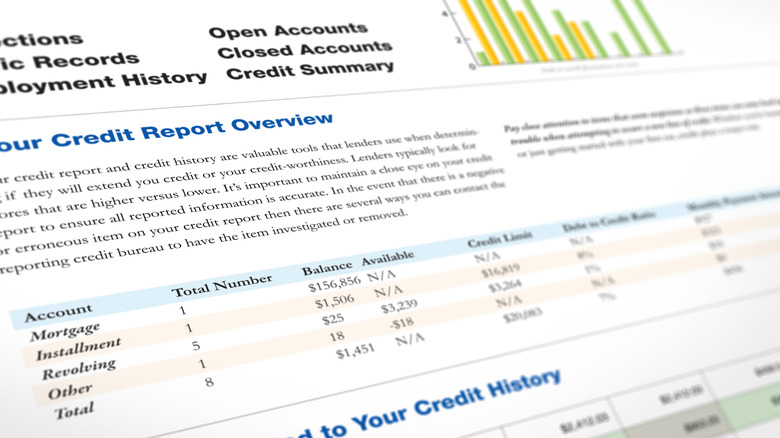11 Things First-Time Buyers Always Get Wrong About Buying A House
Homeownership is something that many people look forward to with intense excitement. 94% of participants in a recent LendingTree study link homeownership directly to their understanding of the American dream, while 84% personally aspire to own eventually. Real estate trends appear to support this sentiment, with 2.1 million more owner-occupied homes being counted in 2020 than in the previous year — the largest net increase since 2003-2004.
But moving from renting to owning can seem like a gigantic hurdle. Not only is saving for a down payment a near-Herculean task, but the small details involved in successfully navigating the property market can make the experience feel increasingly daunting as you continue through the home-buying process. Many first-time buyers make mistakes as they explore the marketplace and the financial aspects of a real estate purchase. Many of these will be felt as minor inconveniences later on, but some mistakes are potentially damaging to financial health over the long term. Fortunately, avoiding these pitfalls is quite easy if you know what you're looking for. From the emotional aspects of purchasing a home to the financial calculations involved, these are a few of the most common mistakes that first-timers have to manage as they prepare to close on a new place to live.
Spending more than you can afford
The first — and perhaps gravest — mistake that any new homebuyer can make is spending too much on their home. The vast majority (around 70%) of homes purchased in 2021 used mortgage funding to close the deal. While the pandemic saw a change in market behavior, including an increase in cash purchases, mortgages remain the backbone of the home-buying experience. The result is a repayment schedule that will act roughly similar to the monthly payment of rent that first-time buyers will surely be acquainted with.
For buyers and renters alike, affordability means securing a manageable monthly payment. For homeowners, however, there are additional wrinkles to keep in mind. New appliances and furniture may be a high priority just after moving in, which may be purchased on finance in some cases. Similarly, anything that breaks in the home falls to you rather than your landlord to handle. Experts suggest spending no more than 25% of your take-home pay on your home. With a rented property, changes in your financial circumstances can be met with a move at the end of your lease (perhaps within a few months). But when you own your home, you might be on the hook for a 25- or 30-year mortgage. This means thinking long and hard about your budget to set yourself up for long-term stability and repayment capacity.
Saving only for the down payment
First-timers often get incredibly excited when they hit their down payment savings goal. After identifying an affordable price range and setting a savings target to facilitate the purchase, hitting this magic number can feel like a gigantic win. Finally getting over the hump on saving for a down payment is a massive accomplishment, but it isn't the only expense you'll need to set money aside to cover when purchasing your first home.
Experts in the industry consider 25% of the sale price a healthy target. Of course, this figure will change based on your circumstances and the down payment you opt to contribute to close the sale. However, to cover the classic 20% down, adding another 5% gives you the financial standing to handle closing costs and the expense of moving into the home without dipping into other savings or relying on a credit card to finalize the purchase. You may also be moving from a fully furnished apartment, adding the need to buy a bed, couch, and other essentials almost immediately. With added funding set aside, these tertiary costs won't add a squeeze to your wallet as you prepare to experience the elation of becoming a homeowner.
Only getting one mortgage quote
Shopping around for mortgages can save you thousands over the life of the loan. A mortgage is the longest lending product that typical consumers will ever negotiate and use. It's also connected to the highest dollar-value asset that most people will ever purchase. This means that getting the right mortgage product is crucially important for every buyer. Unfortunately, the lending landscape is particularly difficult to navigate for those who've never experienced the homebuying process before.
It's easy to briefly look into average repayment terms and settle on the first quote you get if it's roughly in line with this figure, or perhaps undercuts the average. Buyers, regardless of location, price range, or any other factor, should seek out quotes from three to five lenders before settling on any specific mortgage product. The difference in just one percentage point means a change in the monthly payment amount of about $100. Saving $100 a month with a lower interest rate results in an extra $1,200 in your pocket by the end of just the first year. This additional capital can go toward paying down the principal directly, or it might help you enhance your retirement savings or yearly travel budget. Similarly, different lenders might offer the same rate, but charge different origination fees or tack on other costs. Simply put, comparison shopping can offer a dramatically improved path forward financially.
Considering just one down payment option
In the same way that a single mortgage quote shoehorns a buyer into a particular direction for their homeowning future, considering only one down payment option is equally limiting. Today, the standard 20% down payment is no longer the monolith that it once was. The average first-time buyer pays just 6% down on their home purchase, allowing for a drastically more realistic savings target, among other financial mobility benefits that follow along.
If you're able to retain some input into how much cash you'll contribute upfront, mulling this over is crucial. By offering up the traditional 20%, you'll avoid paying PMI tacked onto the loan. This is a big deal, considering that private mortgage insurance protects the bank and not the buyer. An ownership share of less than 20% comes along with this added cost that typically falls between 0.2% and 2% of the loan amount, per year. Getting over the 20% equity hump means you can shed the added cost of financing the bank's insurance, but every individual buyer's financial needs will be uniquely their own. If you can afford to put down 15% rather than 10% for instance, that additional step closer to the PMI threshold might be worth it for your financial math. However, for some buyers — like those who might be gutting and rebuilding an old property and therefore need all the cash they can hold onto — a rock bottom down payment might make more sense.
Making an emotional decision
Emotion certainly plays a role in any home purchase. It's impossible to divorce the financial aspects of purchasing a house from the reality that it will serve as your home base many years into the future. Your home is the space that will support many of life's most important memories and experiences, and therefore it's naturally an emotionally charged place. But you can't forget that this is the most important financial decision you'll likely ever make, as well.
A home is a potent fiscal resource. It can act as leverage for lending opportunities later in life (through a reverse mortgage or even a secured personal loan of some kind), and it's likely to increase in value year over year, too. Historically, the national average comes out to an increase of about 5% per year, meaning the longer you own your home the more it's likely to be worth. The potential value addition will improve your ability to purchase a home later in life that better serves your needs — maybe a larger home as your family expands, or a smaller one as you near retirement. So opting for a home that's in an area likely to see growth can be beneficial. The property you ultimately purchase serves you in more ways than just as a place to live and grow into your lifestyle. Remembering that it's a crucially important financial asset is essential.
Forgetting to explore the neighborhood
House hunters looking to buy for the first time are often hyper-focused on the home itself. The layout and amenities that a home provides are some of the most important considerations when searching for a home that matches your needs. But the home isn't the only point of focus, and this is something that first-timers often lose sight of as they scour the market.
In addition to the front yard, number of rooms, and square footage of the living room, a home is grounded in a particular location. While you can change just about anything about your home if you want to, your physical address is an immutable property that can't be changed without picking up and moving somewhere new. As a result, it's just as important to explore the neighborhood and surrounding features as it is to inspect the property. Looking for restaurants, grocery stores, and other businesses that you'll frequent as a resident can give you a sense of the community's general environment. It's also a good idea to look into the local schools if you're planning to have children (or have already started a family). Local sports teams, entertainment options, and even the people who live nearby will all temper the way that you interact with your environment and make use of the home.
Forgoing the home inspection
Unless you find yourself buying in an aggressively slanted seller's market, there's little need to skip the home inspection. In certain circumstances, this will come into play to close a competitive deal, but for most buyers, the inspection is something that can't be overestimated. A professional will diligently walk the property and evaluate the home's systems, structure, and individual features. The resulting report will illuminate any problem spots that should be addressed in the home. For instance, an inspector might find cracks in the foundation, or aging insulation in the attic that might require (rather than benefit from) attention.
There are two things that buyers gain from the inspection report. First of all, with a home inspection contingency, buyers can renegotiate on price. If there's a major leak in the kitchen, for instance, a buyer can leverage the information in the report to seek a price reduction to cover the cost of the repairs. Alternatively, buyers can ask sellers to handle repairs themselves before handing over the keys and closing the deal. At the most extreme end, if an inspection reveals significant trouble in the home, it can make the decision to walk away from the deal easier — and perhaps offer a path to getting any down payment already contributed returned.
Waiting for the perfect home
In the same way that pulling the trigger on a property with too much haste can backfire, so too can cautiously waiting for the perfect home to cross your view. Any homebuyer will come up with a list of must-haves and deal breakers. But sticking too religiously to these facets of the ideal home often leads buyers to overlook great properties that might not be perfect but still hit many of their needs. The truth is that there's rarely a perfect home out there for any given buyer. This is especially true for first-timers. As a green home seeker, you aren't likely to have a fully formed understanding of all the nuances of homeownership. That's perfectly normal, but it can lead to viewing homes with blinders on — both in ways that showcase little faults in an otherwise excellent home or hide glaring issues in a property that includes several attractive amenities.
The reality of homebuying means that most shoppers will need to outline the type of home they want, and then be ready to compromise to find a suitable space to live. As a homeowner, it's always possible to make cosmetic or even structural changes later on. Finding a home that serves your needs, even if it isn't the perfect space that matches your dream home precisely, takes compromise as well as discretion and caution.
Starting the search before applying for mortgage preapproval
The homebuying process doesn't truly kick into full gear until you've got the capital required to purchase a home lined up. This means saving up for the down payment as well as applying for mortgage preapproval to gauge exactly where you stand in terms of buying power and repayment obligations. Mortgage preapproval gives you the confidence to make a realistic offer on a home that you love, and it shows the seller's real estate agent that you're a serious buyer and not just a wishful thinker. Anyone can express interest in a home, but if you haven't been preapproved for a mortgage when speaking with a realtor then you may be overlooked when the seller starts to consider offers on the table from interested buyers. Preapproval indicates that a buyer has been vetted and will definitively receive funding to buy a home up to a certain limit.
In the current marketplace, you may be looking at higher-than-average competition for just about any home that meets your needs. The difference between closing on a home and being repeatedly snubbed by sellers can lie in this simple step taken before making an offer. You'll need to apply for mortgage funding before closing on a purchase anyway, so preapproval is a planning step that provides clarity to a seller as well as realistic budget expectations for your purposes.
Failing to manage credit accounts throughout the buying process
Every buyer knows the importance of paying down existing lines of credit before taking out a mortgage loan. Experts suggest keeping revolving credit utilization below the 30% threshold (a goal that's also essential for maintaining a good credit score). But there's more to credit management than just paying off balances and keeping new spending to a minimum.
It's crucial to keep your credit situation in equilibrium during the home search and purchase period. Taking out a new loan or opening a new credit card account can throw your credit score out of whack and add a new curveball to your credit report. These are red flags that mortgage lenders will want to evaluate closer, delaying or potentially even derailing the process of purchasing your new home. It's good practice to start eating away at debts in the six months or more before purchasing a home, but you'll also want to essentially freeze any activity that doesn't involve paying off debt from the moment you apply for preapproval through to the sale's close.
Overlooking alternative lending and assistance programs
Lending programs exist to help higher-risk buyers secure funding, as well as individuals who meet certain qualification requirements. VA loans, for instance, offer backing from the Department of Veterans Affairs and allow active-duty servicemembers and qualified veterans the ability to purchase a home at a great rate. VA backing means a lender can feel more secure in their approval of the loan which often results in a lower interest rate.
FHA loans (from the Federal Housing Administration) are built to provide the same kind of fiscal backing to those who have lower credit scores and may not be eligible for typical lending opportunities. First-time buyers may also be eligible for tax credits, grants, and other programs that put valuable capital back into their pockets after closing or offset the cost of the home upfront. To take advantage of these kinds of incentives, you'll need to explore your local government's online resources. However, there are often many kinds of benefits that are available to first-time buyers, so looking for ways to cash in on your status as a first-timer should be a high priority.


